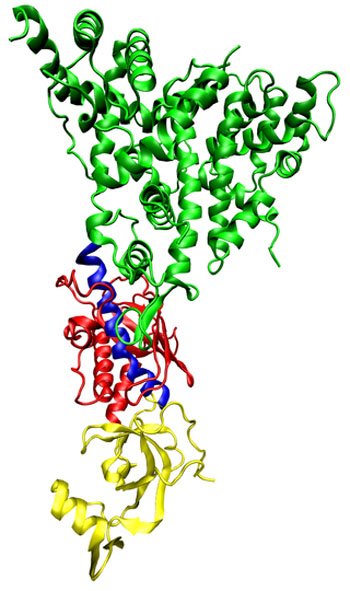Deleting the Dicer DNA-Repair Enzyme Increases Sensitivity of Cancer Cells to Chemotherapy
By LabMedica International staff writers
Posted on 13 Jan 2016
Blocking the activity of the enzyme Dicer in rapidly growing cancer cells prevents them from correcting DNA damage, which renders them more sensitive to the action of chemotherapeutic drugs.Posted on 13 Jan 2016
Dicer, also known as endoribonuclease Dicer or helicase with RNase motif, is an enzyme that in humans is encoded by the DICER1 gene. Being part of the RNase III family, Dicer cleaves double-stranded RNA (dsRNA) and pre-microRNA (pre-miRNA) into short double-stranded RNA fragments called small interfering RNA and microRNA, respectively. In 2012 it was found that in addition to its effects on RNA, Dicer had a direct role of in repairing DNA damage.

Image: Representation of a molecule of the Dicer enzyme (Photo courtesy of Wikimedia Commons).
To expand on findings linking Dicer to DNA repair, investigators at the University of North Carolina (Chapel Hill, USA) deleted Dicer in preclinical mouse models of medulloblastoma, a common type of brain cancer in children, and from the normal, rapidly dividing developing brain cells in the mouse cerebellum.
They reported in the December 31, 2015, online edition of the journal Cell Reports that deletion of Dicer in the developing mouse cerebellum resulted in the accumulation of DNA damage leading to cerebellar progenitor degeneration. Dicer deficiency also resulted in DNA damage and death in other rapidly dividing cells including embryonic stem cells and the malignant cerebellar progenitors in the mouse model of medulloblastoma. In the Dicer-deficient medulloblastoma mice, the tumor load was lower than in control animals, and the cancer cells were more sensitive to chemotherapy.
“This is the first time that the specific function of Dicer for DNA damage has been looked at in the context of the developing brain or even in brain tumors, despite that the fact that the protein has been extensively studied,” said senior author Dr. Mohanish Deshmukh, professor of cell biology and physiology at the University of North Carolina. “We have found that targeting Dicer could be an effective therapy to either prevent cancer development or to actually sensitize tumors to chemotherapy. We are excited about these results because of the implication that Dicer inhibitors could be developed as a potential therapy for treating rapidly dividing tumors like medulloblastoma.”
Related Links:
University of North Carolina













